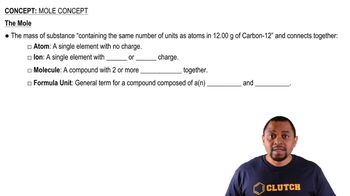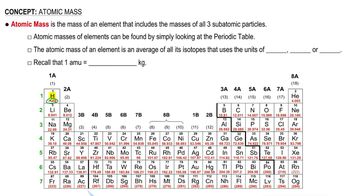Here are the essential concepts you must grasp in order to answer the question correctly.
Mole Concept
The mole is a fundamental unit in chemistry that represents a specific quantity of particles, typically atoms or molecules. One mole contains Avogadro's number, approximately 6.022 x 10^23 particles. This concept is essential for converting between the mass of a substance and the number of particles it contains, allowing chemists to relate macroscopic measurements to microscopic quantities.
Recommended video:
Mass Percent Composition
Mass percent composition refers to the percentage by mass of each element in a compound. It is calculated by dividing the mass of the element in the sample by the total mass of the sample and multiplying by 100. Understanding mass percent is crucial for determining the proportions of different elements in a mixture, which aids in identifying unknown substances.
Recommended video:
Atomic Mass and Element Identification
Each element has a unique atomic mass, which is the weighted average mass of its isotopes. By knowing the total mass of a sample and the mass percent of its constituents, one can deduce the identity of unknown elements. In this case, the atomic mass of argon and the other element can be used to identify the second constituent based on the given mass and particle distribution.
Recommended video:
 Verified step by step guidance
Verified step by step guidance


